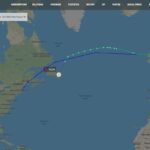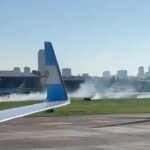Similarities between the Lion Air and Ethiopian Airlines crashes, confirmed by black box data, have focused attention on an anti-stalling system used in the new Boeing 737MAX aircraft.
The Maneuvering Characteristics Augmentation System (MCAS) is an automated safety feature on the 737MAX designed to prevent the plane from entering into a stall, or losing lift.
Both the Lion Air jet, which crashed in October, killing 189 people, and the Ethiopian Airlines aircraft, which went down a week ago Sunday, leaving 157 people dead, were fitted with the system.
Both planes experienced similarly erratic steep climbs and descents and fluctuating airspeeds before crashing shortly after takeoff.
A malfunction of the system was implicated in the Lion Air accident in Indonesia.
MCAS was introduced by Boeing on the 737MAX because its heavier, more fuel-efficient engines changed the aerodynamic qualities of the workhorse aircraft and can cause the plane’s nose to pitch up in certain conditions during manual flight.
Angle of attack sensors on the aircraft tell the MCAS to automatically point the nose of the plane down if it is in danger of going into a stall.
This is done through horizontal stabilizers on the plane’s tail which are activated by the aircraft’s flight control computer.
According to Boeing, MCAS does not control the plane during normal flight but “improves the behavior of the airplane” during “non-normal” situations.
These could be steep turns or after takeoff when a plane is climbing with flaps up at speeds that are close to stall speed.
According to the flight data recorder, the pilots of Lion Air Flight 610 struggled to control the aircraft as the automated MCAS system repeatedly pushed the plane’s nose down following takeoff.
The pilots of the Ethiopian Airlines plane reported similar difficulty before the aircraft plunged into the ground shortly after takeoff.
A preliminary report on the Lion Air Flight 610 accident blamed it in part on a faulty angle of attack sensor that triggered the MCAS system and automatically forced the plane’s nose down.
Following the Lion Air crash, Boeing issued a bulletin to airlines operating the 737 Max 8 advising pilots how to override the MCAS system.
Boeing also said it was working on a software update to the MCAS system which would be deployed across the 737 Max fleet.





